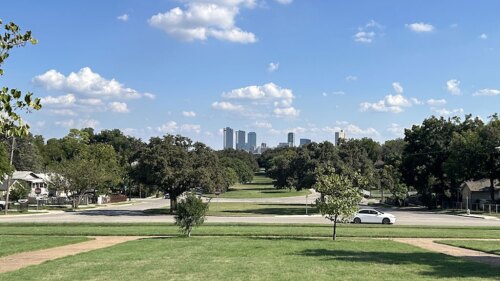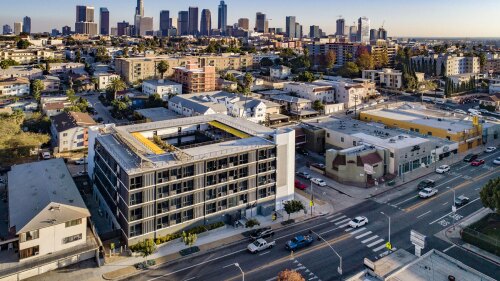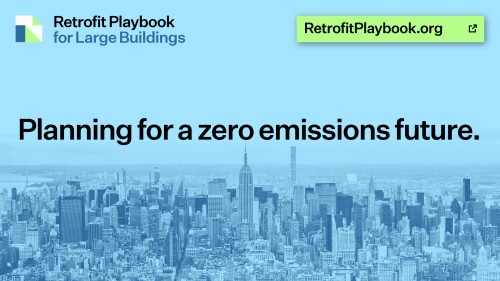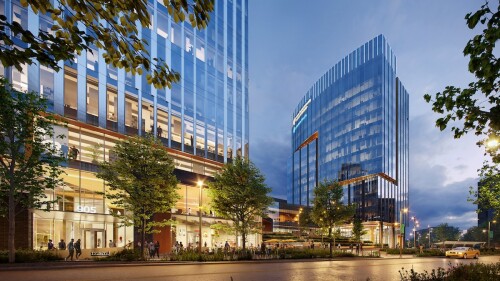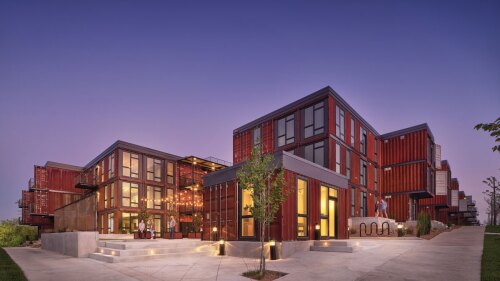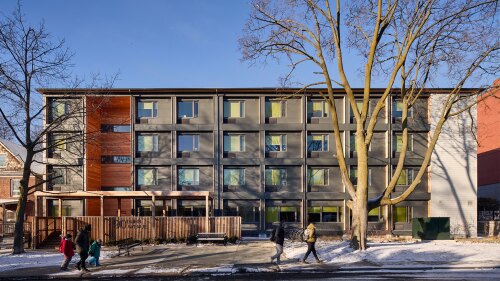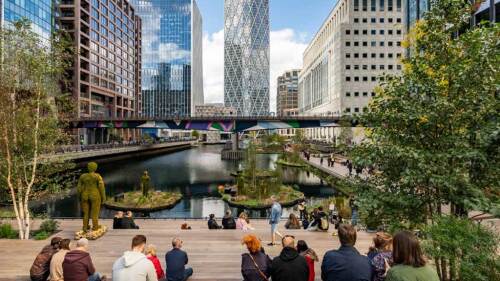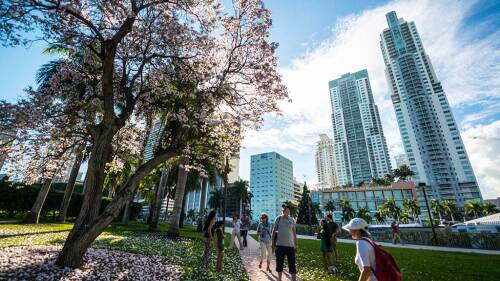Markets
Chicago
Ten communities bring contemporary design approaches to housing for seniors.
How did Reston Town Center, set some 20 miles (32 km) from the nation’s capital in the leafy suburbs of Northern Virginia, generate premium real estate values and become desirable enough to compete for the best tenants? It is a story dating back more than 30 years, the product of critical decisions made by a host of real estate professionals, public officials, planners, and designers.
The city of Chicago is celebrating the adoption of an extensive overhaul of its building code that has been decades in the making. The new code means some big changes ahead for the city. For ULI Chicago’s Building Reuse Initiative, it also represents a significant step forward in its work to clear a path for more building reuse throughout the city.
Dallas
Drawing on insights from more than 1,700 leading real estate investors, developers, lenders and advisors across the U.S. and Canada, the report identifies key opportunities, risks and market shifts that will shape the industry in the coming year.
Since the 1980s, the Dallas suburb of Plano has attracted some of the country’s biggest corporate headquarters and established itself as a hub for major employers. But how did Plano revamp to meet the goals of a changing economy and a changing community? The city made a pivot that has been echoed in growing cities around the country: a major shift toward investing in parks and activating green space.
A team of ULI experts visited Fort Worth in September 2024 to develop anti-displacement strategies for the city’s historic, majority Hispanic Northside neighborhood, which faces mounting pressure from two nearby megadevelopments, as well as broader metropolitan growth trends that drove up the area’s property values 60 percent from 2016 to 2021.
Los Angeles
In a period short on opportunities and long on challenges, design matters even more. Good design principles are always worth employing, whatever the development climate, but three key design aspects pertain in particular: alliance, resilience, and quality.
Experts speak about the near-term prospects for converting office buildings into multifamily housing, best practices for evaluating conversion potential, innovative ways the public sector can support these projects, and other related trends.
The natural reaction to hearing that a product or material has been made with the assistance of modern slavery is to flinch in horror and perhaps disbelief. Unfortunately, the construction industry is ranked second—just behind domestic service—as a problematic industry in terms of its risk of relying on forced labor, according to the 2022 Global Estimates of Modern Slavery, Forced Labour and Forced Marriage report from the International Labour Organization in Geneva.
New York City
Industry pressures abound to decarbonize existing buildings, and some geographies and asset classes make it more challenging than others. This is particularly the case for tall buildings in cold climates keen on decarbonizing their heating system as part of a larger retrofit plan. What technologies are best for the retrofit? How do owners make the projects pencil out financially? Has anyone done these projects before, or do owners face first-mover risks?
A close look at trends shaping today’s best economic and talent hubs that offers valuable clues into how to create equitable, sustainable innovation districts that prosper.
Ten projects deliver compact residential spaces that offer more affordable city living options, foster community, and minimize environmental impacts.
San Francisco
San Francisco can create a more commercially vibrant and socially inclusive downtown that attracts a diverse range of industries and employers, advances housing attainability, and promotes stronger leadership, according to findings released by ULI.
While some big-box retail stores are closing, some developers are eyeing opportunities with retail-to-life science conversions or additions.
These 10 hotels embody environmental sensitivity plus energy and water efficiency.
Toronto
Across North America, cities are confronting a housing crisis that demands urgent, innovative responses. In Toronto, the launch of the Rapid Housing Initiative (RHI) in April 2020 marked a pivotal moment—an accelerated effort at the height of the pandemic to deliver safe, stable housing. Since then, unprecedented investments have been made in communities across Ontario to address housing insecurity, reshaping the province’s residential landscape.
Canada’s real estate market is in the midst of a pivotal shift as the Bank of Canada (BoC) rolls back what has been “higher for longer” interest rates. Yet despite welcome relief on financing costs, real estate leaders are still moving somewhat cautiously amid uncertainty and fluid market dynamics.
Obsolete buildings will constitute up to 50 percent of all new housing in cities
London
Four students from the London Business School have been announced as winners of the second ULI Hines Student Competition–Europe. The pan-European virtual real estate competition challenged teams to present their vision of a future workplace, based on the redevelopment of an office site in Amsterdam.
The wave of interest in well-being in the United Kingdom is expected to translate into significant investment over the next three years, according to ULI research released in the report Picture of Health: The Growing Role of Wellbeing in Commercial Real Estate Investment Decision-making. The report was released this month at an event in Birmingham, England, by the ULI U.K. Sustainability Forum to highlight the rise of well-being investment in commercial buildings.
Rather than being siloed as strictly transportation initiatives, urban mobility projects and policies are increasingly being viewed in part as economic investment. London is a prime example of this approach, said experts speaking at the ULI Netherlands Conference in May.
Paris
Ten built environment projects from eight countries across the EMEA region have been announced as the finalists in the sixth annual ULI Europe Awards for Excellence, which recognize exemplary projects and programs in the private, public, and non-profit sectors. This year’s finalists comprise cutting edge refurbishment, restoration and new build projects, and include residential, healthcare, mixed use, education, community, laboratory, and office projects from Italy, Germany, the UK, Belgium, Sweden, Denmark, France, and Spain.
Although ready to commence a new real estate cycle, real estate leaders globally are braced for another challenging year of uncertainty, with lingering inflation, largely driven by factors including geopolitical instability, and persistently higher interest rates in some regions, potentially delaying a hoped-for recovery in capital markets and occupancy metrics. This is according to the Emerging Trends in Real Estate® Global Outlook 2025 from PwC and ULI, which provides an important gauge of global sentiment for investment and development prospects, amalgamating and updating three regional reports which canvassed thousands of real estate leaders across Europe, the United States and Asia Pacific.
The outlook for the European real estate market is cautiously optimistic despite growing geopolitical uncertainty and concerns about economic growth, with London, Madrid, and Paris emerging as the standout performers, according to a new report by PwC and the Institute.
Hong Kong
Hong Kong is famous for its hospitality industry, but the sector has been under fire for the past three years. Even so, the hotel and food and beverage (F&B) industries have shown resilience and adaptability said panelists during a ULI Hong Kong conference in September.
The Hong Kong government’s recent decision to embrace a new tendering process for the sale of a prime parcel of waterfront land adjoining the Central business district marks a welcome departure from longstanding policy. In the past, such tenders were invariably awarded to the highest bidder without regard to the quality of the proposed development. Now, however, use of a “two-envelope” approach to sell the plot, known as Site 3, means that design also becomes part of the equation.
Communities around the world are racing to control the spread of the novel coronavirus and the disease that it causes, COVID-19. Increasingly, that means implementing aggressive social distancing measures, which can inhibit the spread of the virus and flatten the transmission curve. Given what is known about the virus so far, using building strategies to help slow the spread of the disease makes sense to help protect those who must work in an office or commercial setting and in multifamily settings.
Singapore
Singapore’s Urban Redevelopment Authority has transformed Marina Bay into mixed-use urban neighborhood. public open space, and source of drinking water for the country’s 5.4 million residents.
A new report draws upon Singapore’s successful urbanization experience. Despite its population density, the city-state has consistently ranked favorably in various surveys measuring the livability and sustainability of cities around the globe.
As cities become denser, the cost of high-density parking begins to pencil out for developers—which is when the development of parking that automatically stores and retrieves cars becomes attractive.






